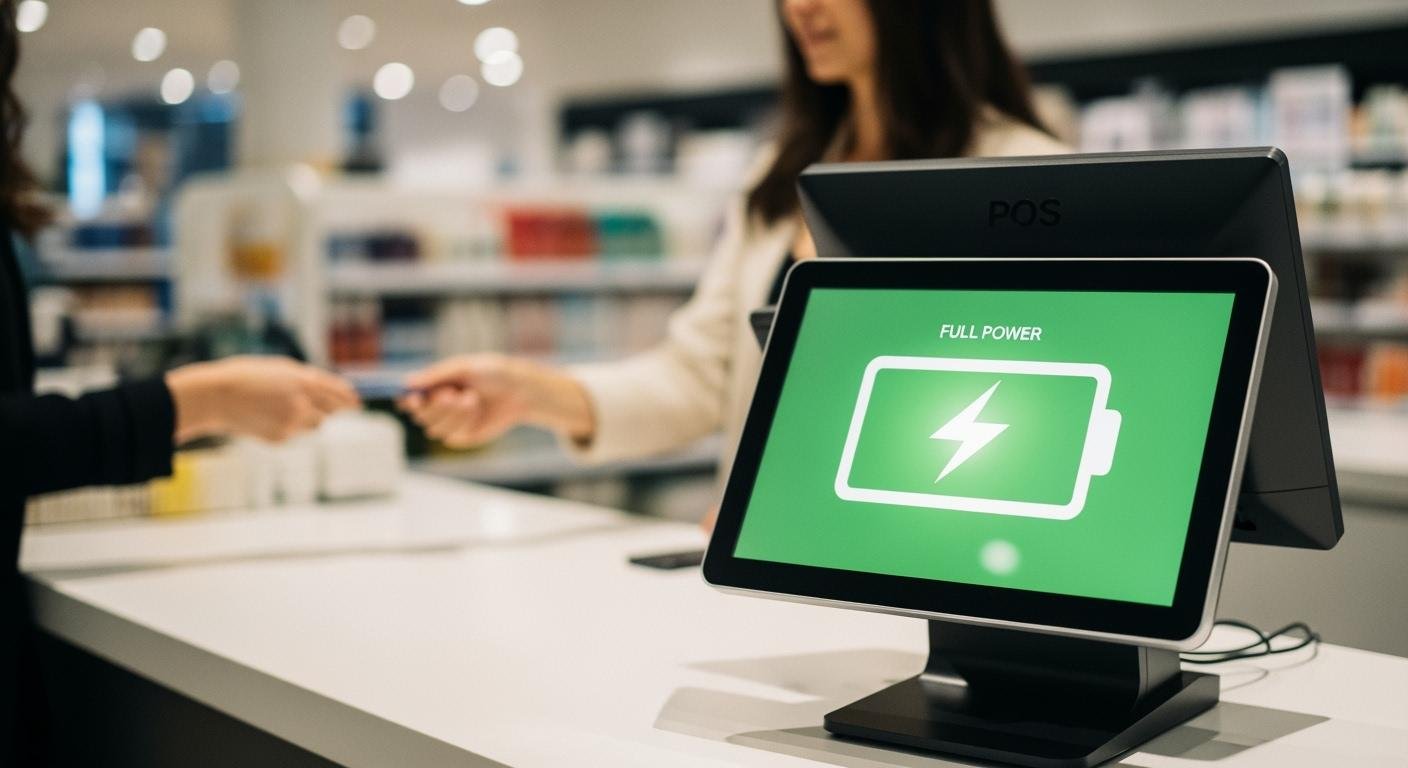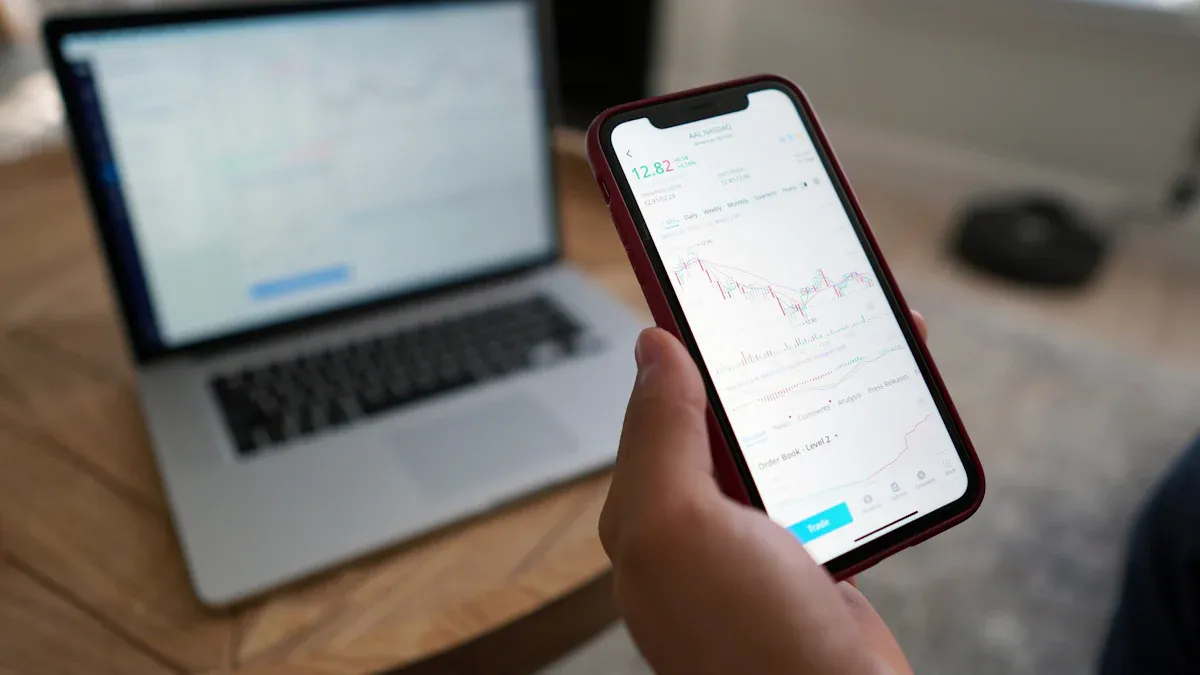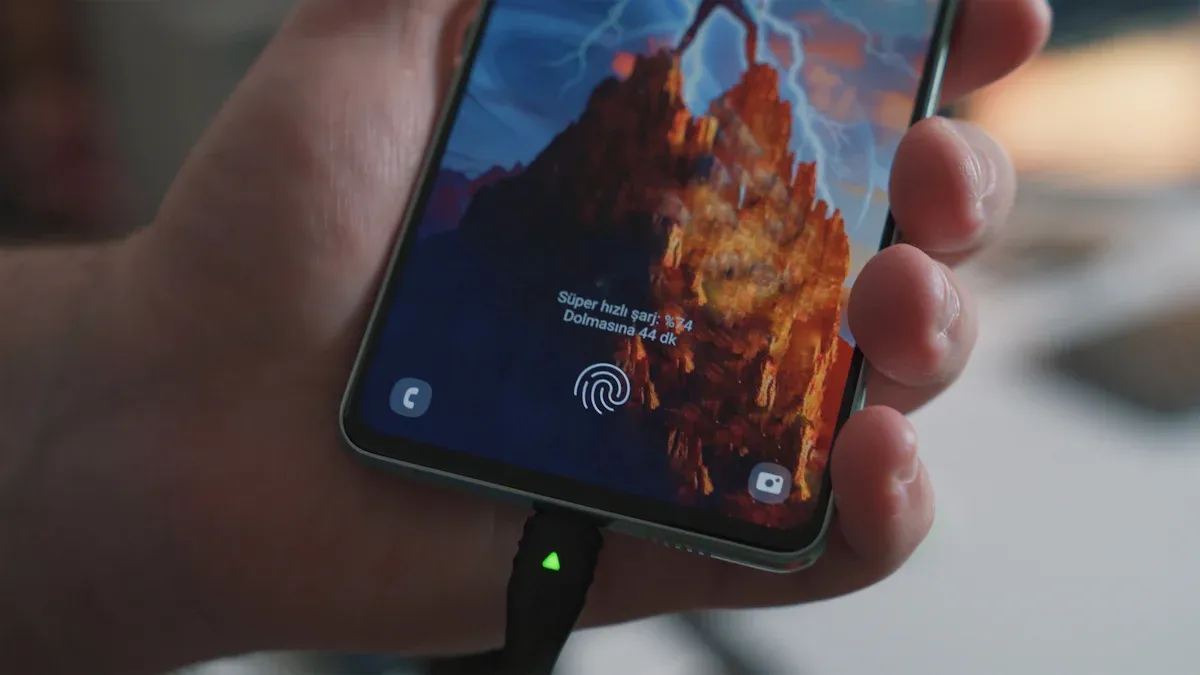
A dying POS terminal battery can stop your business cold. For small businesses, POS downtime can cost over $427 per minute in lost revenue. You need your payment terminal to last through the entire day. Good power management is key to extending the battery life of your terminals. You can improve battery life and protect your sales with simple management habits. This guide helps you get the most life from your Android POS terminals, ensuring your POS device is always ready for the next transaction. Effective power management gives your battery a longer life.
Optimize Settings to Improve Battery Life

Your POS device’s settings are the first place to look for quick power savings. Many modern POS terminals offer a standard battery life of 8 to 12 hours, which is ideal for a typical workday. Some models even provide an extended life of 16 hours or more. You can reach these performance levels with good power management. Simple adjustments to your power management settings can significantly improve battery life and keep your device running when you need it most.
Adjust Screen Brightness and Sleep Timers
The screen on your POS is one of its biggest power users. A bright screen is necessary when you work outdoors or in well-lit areas. However, you can lower the brightness indoors to save a surprising amount of power.
Setting a short screen sleep timer is another effective power management strategy. This feature automatically turns off the screen after a period of inactivity. A shorter timer means the screen spends less time on, which extends the battery life of your terminals. You can usually find this option in your device’s display settings.
Pro Tip: Setting Your Sleep Timer You can easily change the sleep mode setting on many Android POS terminals. Follow these general steps:
- Go to the Settings menu from your home screen.
- You may need to enter an admin password.
- Tap on Display, then find the Sleep option.
- Choose a short time limit, like 1 or 2 minutes, for the best results.
Activate Built-in Power-Saving Modes
Most Android POS terminals include a built-in power-saving mode. This feature is a powerful tool for battery management. When you turn on power-saving mode, your POS automatically adjusts several settings to reduce power consumption. It may dim the screen, limit processor speed, and reduce background activity. This gives you a longer life from each charge. You should activate this mode when the battery gets low to ensure you can complete your final transactions of the day. This simple action is a key part of smart power management.
Disable Unnecessary Connectivity
Your POS terminal constantly searches for signals like Wi-Fi, Bluetooth, and GPS. Each search uses battery power. An effective way to improve battery life is to turn off connectivity features you are not using. For example, if your receipt printer is not connected, you can disable Bluetooth. This stops the POS from wasting energy searching for a device.
Proper management of network usage also helps. Your POS uses the network to process payments and sync data. Some applications use GPS for location services, which is a major power drain. You can adjust your power management settings to use less precise location methods, which rely on Wi-Fi instead of GPS. This small change makes a big difference in the overall life of your battery.
Manage Software and Applications
The software on your POS device plays a big role in its battery life. Good software management ensures your POS runs efficiently. Running multiple applications at once can drain your battery quickly. You can extend the life of your terminals by paying attention to what is running on them.
Close Unused Background Apps
Apps running silently in the background consume significant power. Your POS may have several services active that you do not need. Closing these unused apps is a simple form of power management that gives your battery a longer life. This action helps conserve power for essential payment tasks.
How to Find and Close Background Apps You can find which apps are using power on Android POS terminals.
- Go to Settings > About phone and tap the Build Number 7 times to enable Developer Options.
- Return to Settings, find Developer Options, and select Running Services.
- This list shows active apps. You can tap an app to see its details and stop it.
Keep Firmware and Software Updated
Manufacturers release updates to improve device performance and power management. You should always keep your POS firmware and software updated. These updates often include important fixes for better battery management. For example, an update might refine charging modes, improve battery temperature monitoring, and reduce unneeded background processes. This ensures your POS operates at peak efficiency and gives the battery a longer life. Regular updates are a key part of extending the life of your terminals.
Uninstall Non-Essential Applications
Extra applications on your POS can use up valuable resources and shorten battery life. Some terminals come with pre-installed apps you may not need, such as web browsers. You should review the applications on your POS and uninstall any that are not essential for your business operations. A cleaner system uses less power and helps you get the most life from your device. This simple management step keeps your terminals focused on processing payments.
Adopt Smart Usage and Charging Habits

How you use and charge your POS device daily has a huge impact on its battery. Good habits are a core part of your power management strategy. Simple changes in your routine can protect your battery’s health and extend its overall life. This ensures your payment terminal is always ready for business.
Avoid Extreme Temperatures
Temperature is one of the most critical factors affecting battery life. Your POS terminal’s lithium-ion battery performs best in moderate conditions.
🌡️ Optimal Temperature Range:
- Operating: Keep your POS running between 15°C and 35°C (59°F to 95°F) for peak performance.
- Charging: Never charge the battery below 0°C (32°F) or above 45°C (113°F).
Exposure to extreme temperatures causes permanent damage. Cold weather increases the battery’s internal resistance, which can temporarily reduce its capacity by 20% at freezing point. High heat is even worse. While it might seem to boost capacity, it drastically shortens the battery’s life. A 10°C increase in temperature can double the corrosion rate inside the battery, effectively cutting its lifespan in half. You should never leave your POS device in a hot car or in direct sunlight.
Utilize External Power Sources
For businesses on the move, external power sources are essential. They provide a reliable backup when an outlet is not available. This is a key part of mobile power management.
Power On the Go: Certified Power Banks A high-quality power bank can keep your POS running all day. When choosing one, look for key features to ensure safety and efficiency:
- Certification: FCC certification for safety.
- Capacity: 20,000mAh or more for heavy use.
- Charging Speed: 18W+ Power Delivery (PD) for fast charging.
- Safety Features: Protection against overcharging and short circuits.
For businesses with multiple terminals, like restaurants or retail stores, dedicated charging docks are a great solution. These stations use POGO pins or wireless technology to charge up to five devices at once. This keeps your fleet of POS terminals organized, fully charged, and ready for the next shift.
Maintain and Extend Battery Life
Proper charging is the foundation of good battery management. Your daily habits determine how long your battery will last. Following a few simple rules will help you improve battery life and get the most value from your POS.
First, always use the original manufacturer’s charger or a certified compatible one. Low-quality chargers can provide incorrect voltage, which damages the battery and creates a safety risk.
Second, you should rethink how you charge your device. Modern lithium-ion batteries do not have a “memory effect,” so you can charge them whenever it is convenient. However, their life is measured in charge cycles. A deep discharge puts more stress on the battery than a shallow one.
Think of it like a paper clip: Bending it just a little lets you use it many times. Bending it all the way back and forth will cause it to break quickly. Your battery works the same way.
To maximize the life of your batteries, follow these charging rules:
- Avoid Extremes: Try to keep your battery level between 25% and 80%. Avoid draining it completely or leaving it at 100% for long periods.
- No Overnight Charging: Disconnect your POS from the charger once it is full to prevent overcharging.
- Long-Term Storage: If you need to store a device for an extended time, charge it to around 40%-60%. This level minimizes chemical wear and preserves its health.
This careful management ensures your POS device has a long and productive life.
You can improve battery life for your POS with simple habits. Adjusting settings and managing apps prevents system crashes that halt sales. These small changes ensure your POS is always ready for a transaction.
One of our customers told us: “I used to restart my device 3-4 times daily. Haven’t touched the power button in weeks.”
This reliable battery life protects your revenue and keeps your business running smoothly.
FAQ
Why is my POS battery draining so fast?
Your POS battery drains quickly from a few common causes. High screen brightness, background apps, and constant network searches use the most power. You can adjust these settings in your device menu to significantly improve battery life and performance.
Is it okay to charge my POS terminal overnight?
You should avoid charging your POS terminal overnight. Leaving it plugged in at 100% puts stress on the battery. This habit can reduce its overall lifespan over time. Unplug the device once it is fully charged.
When should I replace my POS battery? 🔋
You should consider replacing your battery when it no longer lasts a full workday. Batteries have a limited number of charge cycles, usually around 500. Contact your device manufacturer for safe replacement options to ensure continued reliability.
Do software updates really help battery life?
Yes, software updates are very important for your device’s health. Manufacturers often release updates to:
- Improve power management features
- Fix battery-draining bugs
- Optimize overall device performance
Keeping your software current helps your battery run efficiently.

